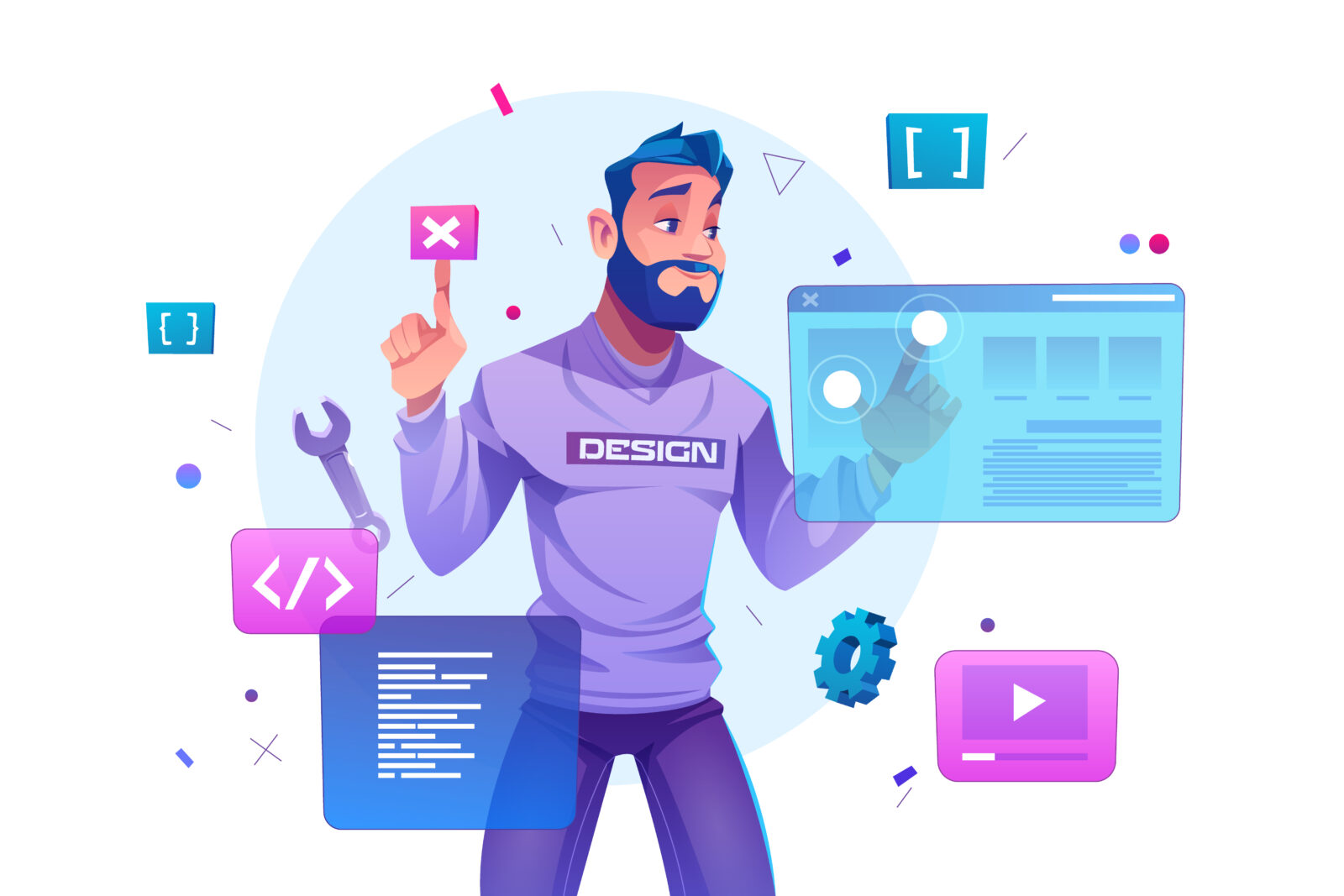Web design in the digital age is way beyond the production of some compelling visuals. It articulates an immersive and user-friendly experience for the visitor to stay engaged on a website.A website must be eye-catching and informative to allow users to get to the destination with ease. Think of it as a store where things are easy to find, in and out with a smile. No matter whether a seasoned pro, or a beginner, an usable website is important toward your success.
Now, you may be wondering, how to get everything on point. Nothing to worry! In this blog, we will suggest the best web design tips and tricks, using which you will be able to make a site that not only looks great but converts visitors into leads and sales.
Effective Web Design Tips To Excel Your Business In 2024
1. Design with Your Users in Mind
It sounds like a strange thing to have to advise but is, in fact, the very foundation of making a website a success. Before you get started on all the fantastic graphics and animations, first back up a step and think about your target audience. Who are you targeting to reach with your website? What are they looking for? Now, you can design according to them. This involves the use of clear and readable to them language, information being presented in a way that makes sense and there is ease with which they can look for the information they need. If you’re still not confident enough then its better to take professional help from any digital marketing company in India.
2. Adopt Responsive Design
Websites back then could only be viewed from desktop computers. Today a good number of site visits are made through mobile devices like smartphones and tablets. Basically, that technically means your website absolutely must be responsive. Responsive web design is a technique whereby your website will automatically adjust its layout and contents, giving the best performance for a user no matter what sort of device — a desktop monitor or a tiny phone screen. So, use this responsive web design tip to make it more engaging.
3. Make Clarity and Simplicity Your Top Priorities
There’s a saying in web design—a further application of the idea that less is more. Do the best you can to not overload your site with an excess of information, extraneous graphics, or very complicated navigation systems. Clean and simple is the way to go so that users can clearly understand the layout of the site. Use clear headings, bulleted lists, and white space gaps in breaking up text, and to ease the scanning process.
4. Navigation is Key
Your website navigation bar is like a road map to your website; it directs visitors on where to go. Keep the navigation clear, concise, and naturally accessible. Use consistent menu labels throughout the website and avoid confusing or overly technical terms. Great web design dictates that the most important pages should be accessible from anywhere within three clicks.
5. Optimize for Speed
No one loves a slow website. Studies show that people expect to view a website in a maximum of fewer than three seconds. Afterward, it’s safe to say they would likely bail. You can enhance your website speed in various ways such as: image optimization, reduction of HTTP request, and utilization of a reliable website host.
6. High-Quality Images and Visuals
On the one hand, you would want to stick to a clean and simple website, while on the other hand high-quality visuals can literally spice up the entire user experience. Many professional web design tips and tricks have mentioned the essence of using related, high-quality images and videos that complement the content and brand identity of the site.
7. Embrace the Power of White Space
Think about white space, also known as negative space: the absence of space that appears between website elements. You might feel this is somewhat paradoxical, but the management of white space can effectively improve the readability of your website and make a website easier on the eye. White space allows for the distinction of different contents and to enable balance and order.
8. Make it Easy to Contact You
Your website should make it easy for the user to contact you. Normally, it is recommended to put the contact email, phone, and address in the most prominent place: either the header or the footer area of each page. A contact form on the site, such that a visitor can write a message and send it to the owner of the site right from the webpage.
9. Call to Action (CTA)
A call to action is a clear and concise statement that portrays the visitor what step to be done next. This may be subscribing to your email list or a direct solicitation for a sale. Any good web design advice includes the power of strong, concise and well-placed calls to action.
10. Test, Analyze, and Improve
As top websites evolve with user data and feedback, you should, too. Once you have launched your website, you must at once start gauging some of the important metrics: website traffic, bounce rate, and conversion. You should be introspective enough to use such data to scope the development on your website. Many free and paid analytics tools are there to assist you on this journey.
Conclusion
A user-centered website is important, which will help you attract more and more traffic to your site and make them stay longer for the fulfillment of your online goals.So if you’re a newbie, these web design tips for beginners will definitely help you.
With the following 10 quintessential good web design tips and tricks, you can create a user-friendly web page that looks stunning and leads visitors towards becoming potential sources of business. Remember, designing a user-friendly website is an investment towards online success.








Leave a Reply